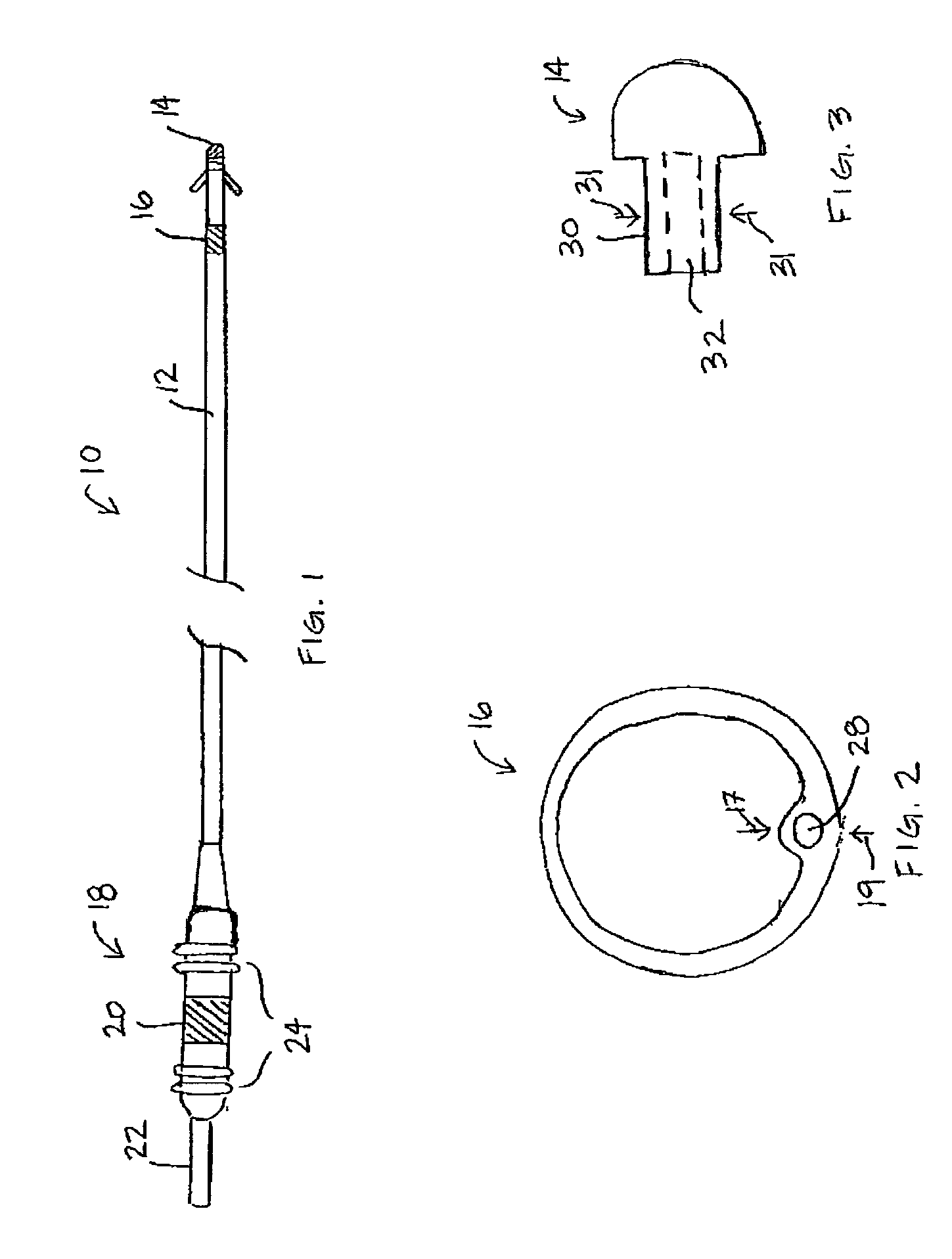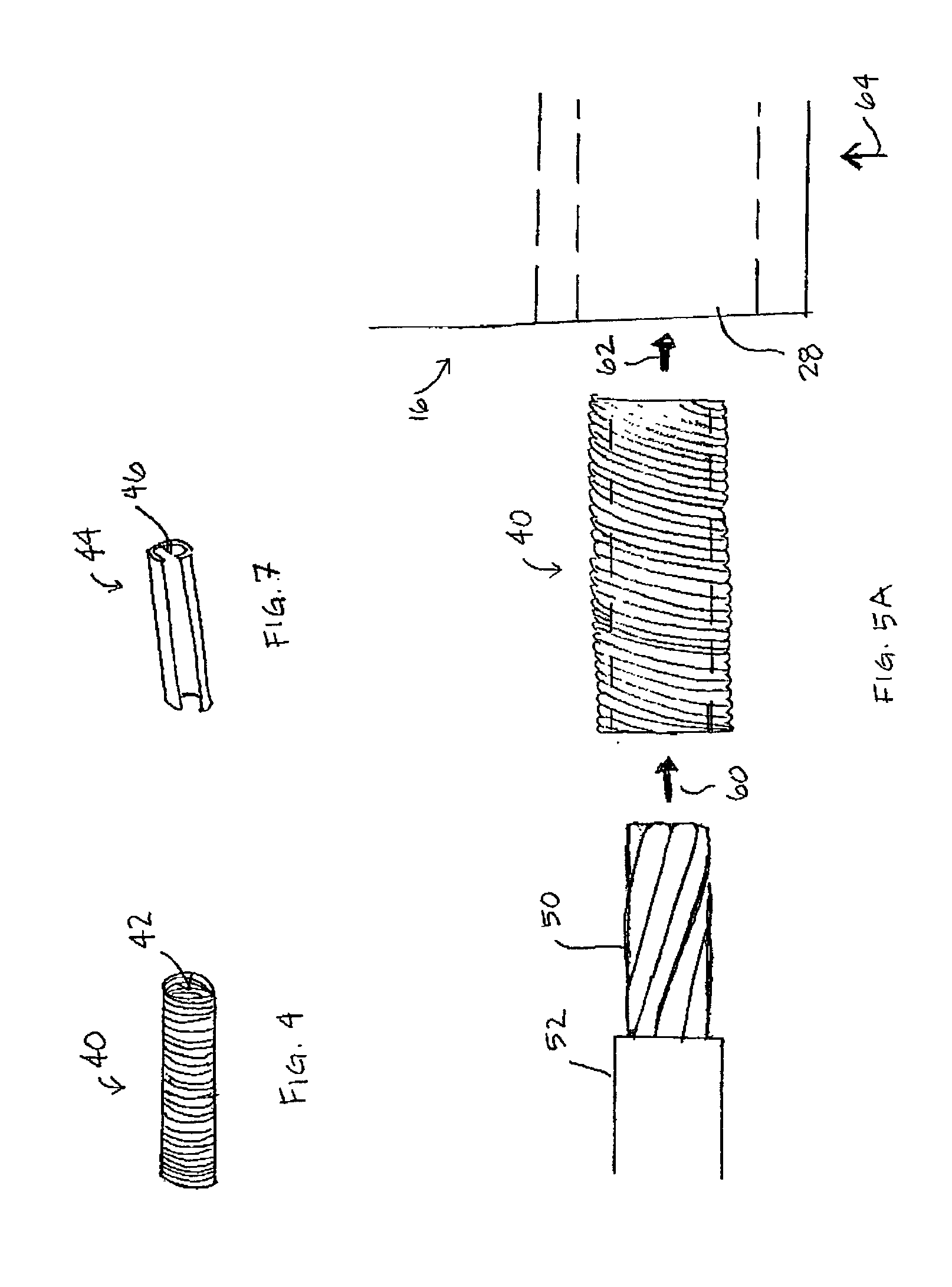Methods and apparatus for joining small diameter conductors within medical electrical leads
- Summary
- Abstract
- Description
- Claims
- Application Information
AI Technical Summary
Benefits of technology
Problems solved by technology
Method used
Image
Examples
Embodiment Construction
[0024]The present invention is directed at providing a method for mechanically joining a small diameter conductor with an associated medical lead 10 component having a relatively larger conductor bore. FIG. 1 is a plan view of a representative cardiac pacing lead 10 representative of one type of medical lead in which the present invention may be used. Numerous cardiac pacing, sensing, or defibrillation leads are known in the art, which may be unipolar, bipolar or multipolar leads (having one, two, or more electrodes). The present invention may also be implemented in other types of medical leads that may be used for sensing or stimulating excitable tissue in other parts of the body, which may include skeletal muscle, peripheral nerves, the central nervous system, brain tissue, smooth muscle, etc. In addition or in lieu of coupling together parts used for such sensing or stimulating functions, the present invention may be advantageously employed to couple diverse sensors deployed by o...
PUM
 Login to View More
Login to View More Abstract
Description
Claims
Application Information
 Login to View More
Login to View More - R&D
- Intellectual Property
- Life Sciences
- Materials
- Tech Scout
- Unparalleled Data Quality
- Higher Quality Content
- 60% Fewer Hallucinations
Browse by: Latest US Patents, China's latest patents, Technical Efficacy Thesaurus, Application Domain, Technology Topic, Popular Technical Reports.
© 2025 PatSnap. All rights reserved.Legal|Privacy policy|Modern Slavery Act Transparency Statement|Sitemap|About US| Contact US: help@patsnap.com



